When it comes to art museums in Spain, nothing beats the collection of the Prado Museum in Madrid.
Perhaps a lesser-known museum is the “Museu de Belles Arts de València” or “Museum Of Fine Arts Of Valencia,” the most important museum in Spain’s third-largest city.
Founded in 1913, its collection comprises over 2,000 artworks, most notably works of old masters created between the 15th and 17th centuries.
The painting collection is incredibly varied and features works of the most renowned Spanish painters in history.
Housed in the opulent St. Pius V Palace, a remarkable blue-domed building, you can find the museum just north of the city’s historical center.
In this article, you’ll discover some of the highlights of the painting collection at this fascinating museum in Valencia.
1. Altarpiece of Saints Ursula, Martin, and Anthony – Gonzalo Pérez
- Date created: 1420
- Dimensions: 385 × 261 centimeters (152 × 103 inches)
The Altarpiece of Saints Ursula, Martin, and Anthony is an immense Gothic painting that is over 6 centuries old. It’s an immense work of art by the most renowned Valencian painter in this historical period.
Regardless of this notion, little is known about the artist’s life. This is by far his best-known work and features all the bells and whistles that make Gothic artworks so distinguishable, including an abundance of gilded decorations.
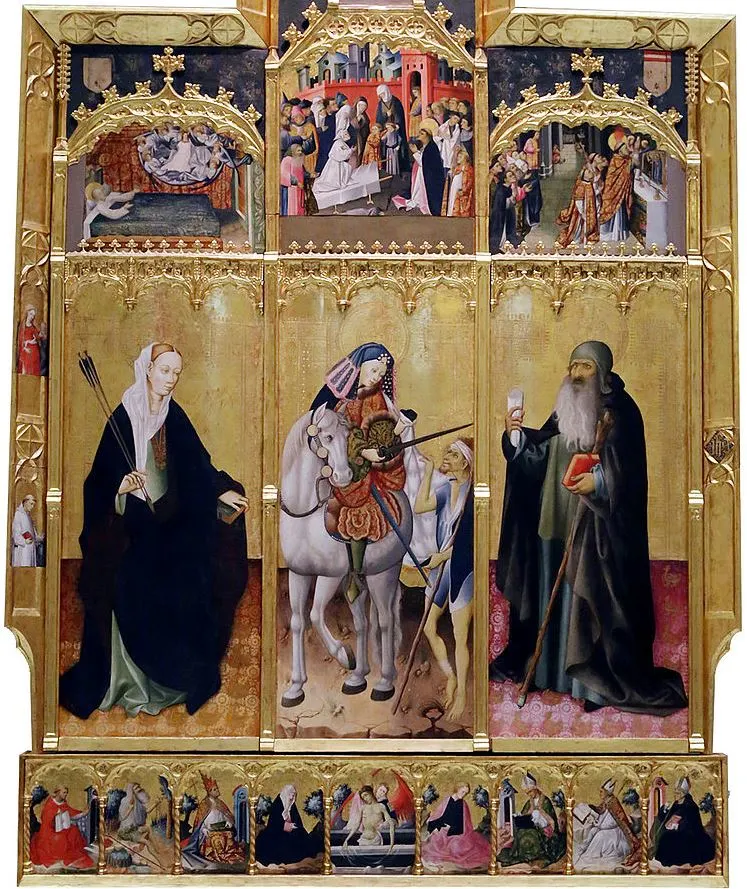
2. Madonna with Writing Child and Bishop – Pinturicchio
- Date created: 1495
- Dimensions: 61 × 46.5 centimeters (24 × 18.3 inches)
Madonna with Writing Child and Bishop is a painting by Italian Renaissance master Pinturicchio (1454-1513). The pope’s cousin, Francisco Borgia, commissioned it to decorate the Collegiate Basilica of Xàtiva near Valencia.

This means that this work was painted in Rome, a time when Pinturicchio earned plenty of commissions from Pope Alexander VI. Despite being painted in the late 15th century, this work leans more toward the Gothic style than the masterpieces created during the High Renaissance.

3. Saint Peter – Michiel Coxie
- Date created: 16th century
- Dimensions: 111.5 x 86 centimeters (43.8 x 33.8 inches)
Saint Peter is the title of one of the many masterpieces painted by Michiel Coxie 1499-1592), a Flemish painter of the 16th century. A versatile artist who produced prints, drawings, and stained glass window designs,, Coxie is best known for his portraits.
He became the court painter of Holy Roman Emperor Charles V and King Philip II of Spain and was nicknamed “The Flemish Raphael.” This work embodies the reason why he deserved this nickname by his contemporaries.
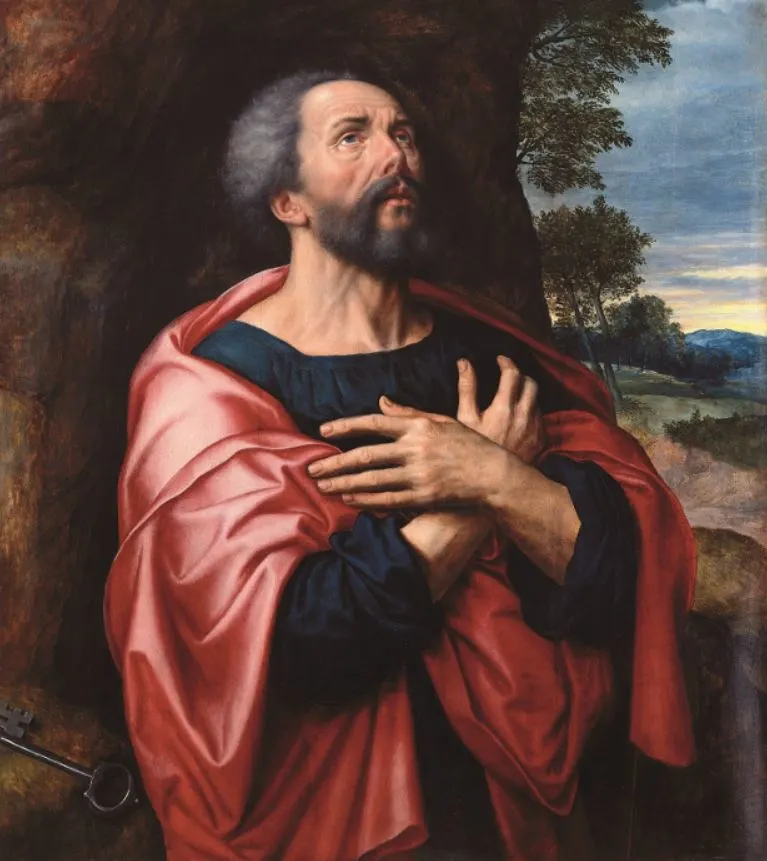
4. Equestrian portrait of Francisco de Moncada – Anthony van Dyck
- Date created: 1630-1632
- Dimensions: 303.5 x 239.5 centimeters (119.4 x 94.2 inches)
The Equestrian Portrait of Francisco de Moncada is an enormous painting by Anthony van Dyck (1599-1641), another Flemish master who worked in Spain during his lifetime. It’s arguably one of his most celebrated works, and that means something.
Van Dyck completed several versions of this work of which the first one resides at the Museu de Belles Arts in Valencia. Another, very similar painting, is part of the collection of the Louvre in Paris. The painting in Valencia, however, is considered the first and completely by the hand of Anthony.
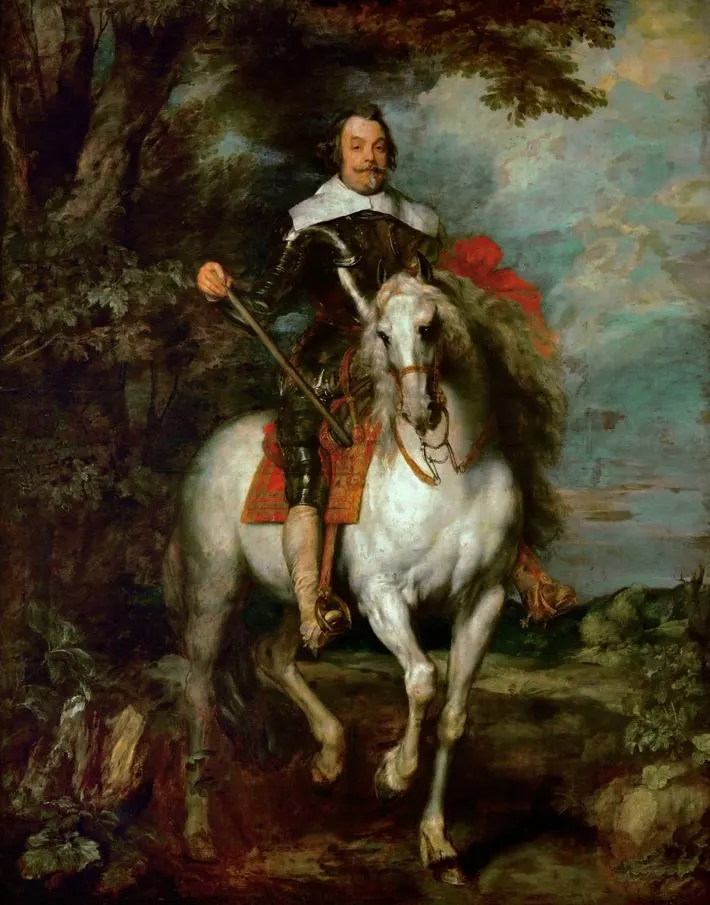
5. Self-Portrait – Diego Velázquez
- Date created: 1650
- Dimensions: 45 x 38 centimeters (17.7 x 14.9 inches)
The Self-Portrait of Diego Velázquez is arguably one of the most impressive works in the museum’s collection in Valencia. Not because of its size of incredible brushwork, but simply because it depicts one of the most famous Spanish painters in history.
Velázquez (1599-1660) painted the world-famous “Las Meninas” about 6 years later and passed away about a decade after he completed this small, intimate work. It looks strikingly similar to his self-portrait in Las Meninas as well.
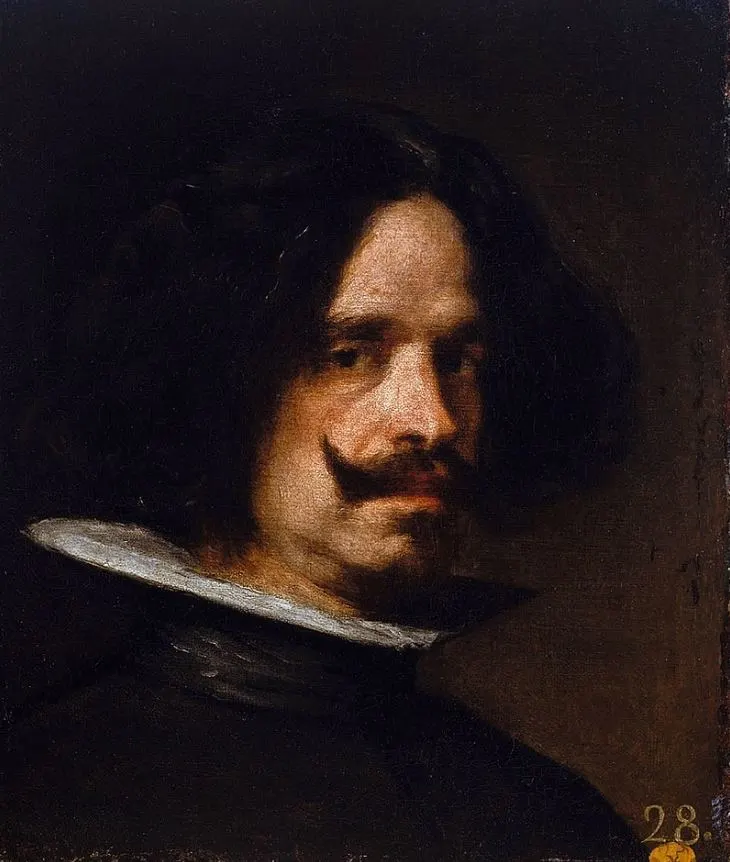
6. Saint John the Baptist – El Greco
- Date created: 1600
- Dimensions: 67 x 63 centimeters (26.3 x 24.8 inches)
Saint John the Baptist is the title of a distinctive painting by El Greco, the Greek-born artist who spent the final decades of his career in Spain. The long brushstrokes and distorted figure of Saint John are typical of his work.
The painting at the Museu de Belles Arts de València is one of two works that exist. The other, which is only slightly different, resides at the Legion of Honor museum in San Francisco, California, United States.
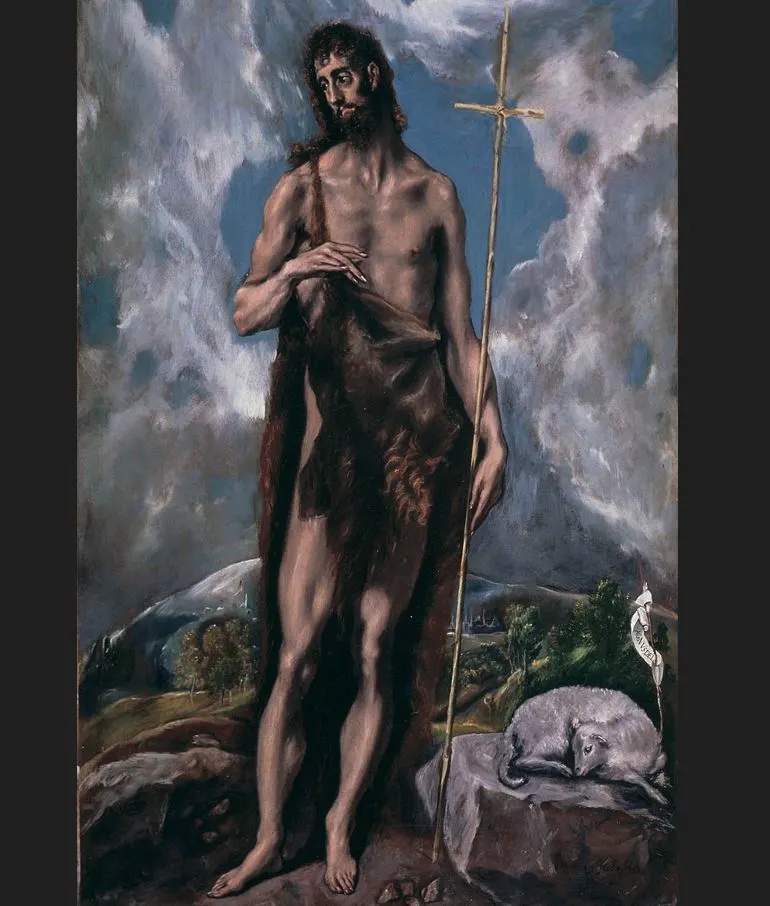
7. The Seesaw (El Balancín) – Francisco Goya
- Date created: 1780
- Dimensions: 30.9 x 43 centimeters (12.1 x 16.9 inches)
The Seesaw or “El Balancín” in Spanish is a painting by Francisco Goya, the other great Spanish master of the Romantic era. This small work depicts a group of children in a rather gloomy environment.
A total of eleven children can be seen and all of them are playing a particular type of game. The monkey on top of the roof and the items in the foreground all add to this fascinating work’s mystery.
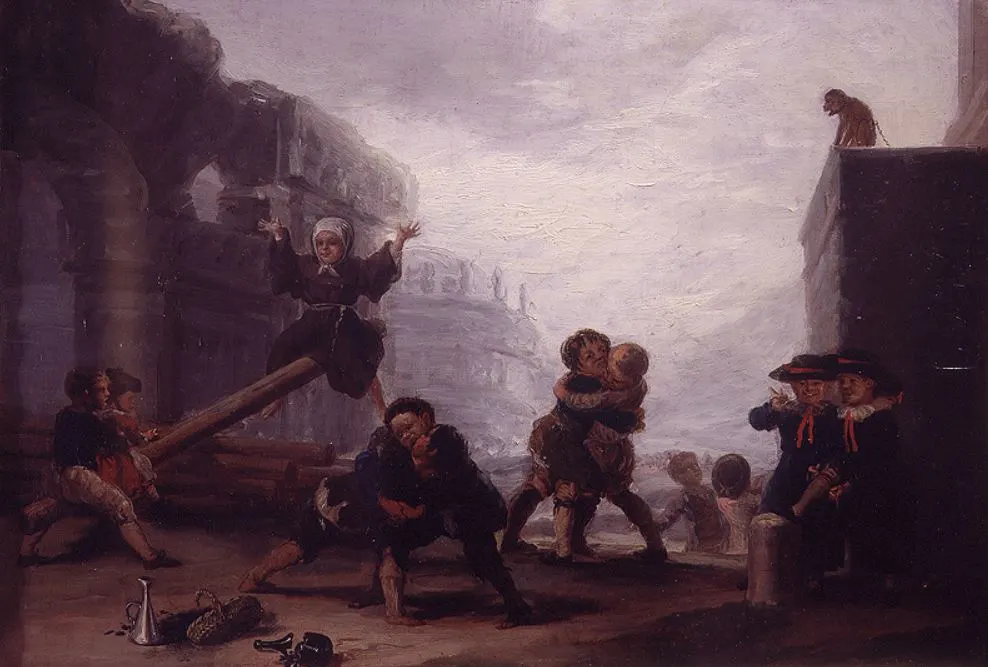
8. Ramón María Narváez, Primer Duque de Valencia – Vicente López Portaña
- Date created: 1849
- Dimensions: 227,7 x 147,5 centimeters (89.6 x 58 inches)
The Portrait of Ramón María Narváez, Primer Duque de Valencia is considered to be one of the most iconic portraits of this famous Spanish politician. It depicts the man about 4 years after he became the Duke of Valencia in 1845.
Queen Isabella II of Spain gave him this title and this work was commissioned to celebrate an amnesty contract he signed that year. The elegantly decorated table next to him depicts this particular document.

9. Portrait of Francisco Bayeu – Francisco Goya
- Date created: 1786
- Dimensions: 112.5 x 84.5 centimeters (44.2 x 33.2 inches)
The Portrait of Francisco Bayeu is another painting by Francisco Goya that depicts a man who became the painter’s brother-in-law. That’s right, Goya got married to Bayeu’s sister, Josefa Bayeu.
Unlike Goya, who moved towards the emotional context of the Romantic era in his career, Bayeu was a Neoclassical painter who produced numerous famous Neoclassical artworks. He was a long-time court painter and became Director of Painting at the Academia in 1788.

10. Grupa Valenciana – Joaquín Sorolla
- Date created: 1906
- Dimensions: 200,5 x 187 centimeters (78.93 x 73.62 inches)
Grupa Valenciana is the title of one of the best-known works by Joaquín Sorolla (1863-1923), a native of Valencia. He painted two of his children, María and Joaquín, as they rode an incredibly decorated horse.
He often found inspiration nearby as he painted his family members on multiple occasions. Monumental works of art, often in historical contexts, were other popular subjects for the Spanish painter.

